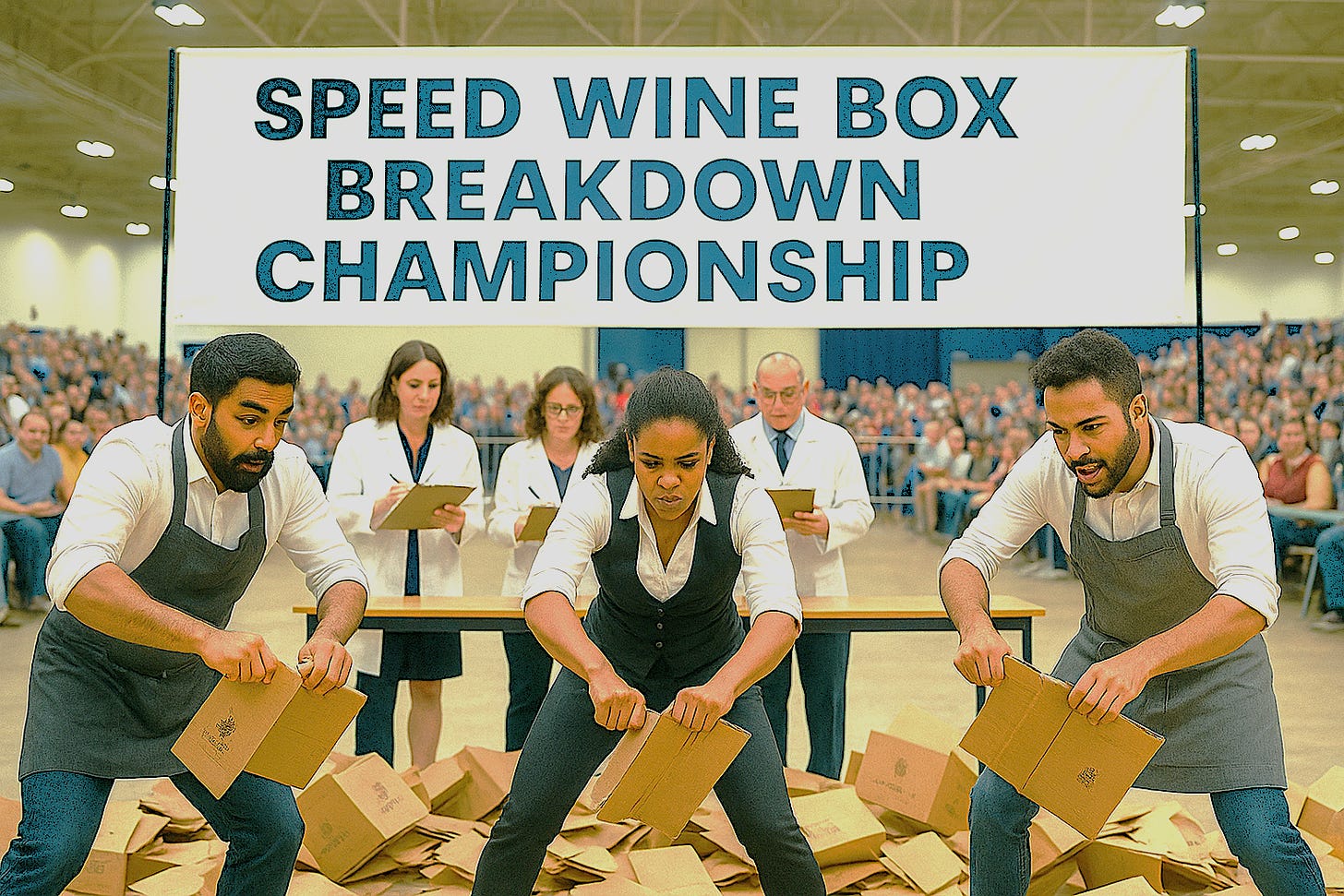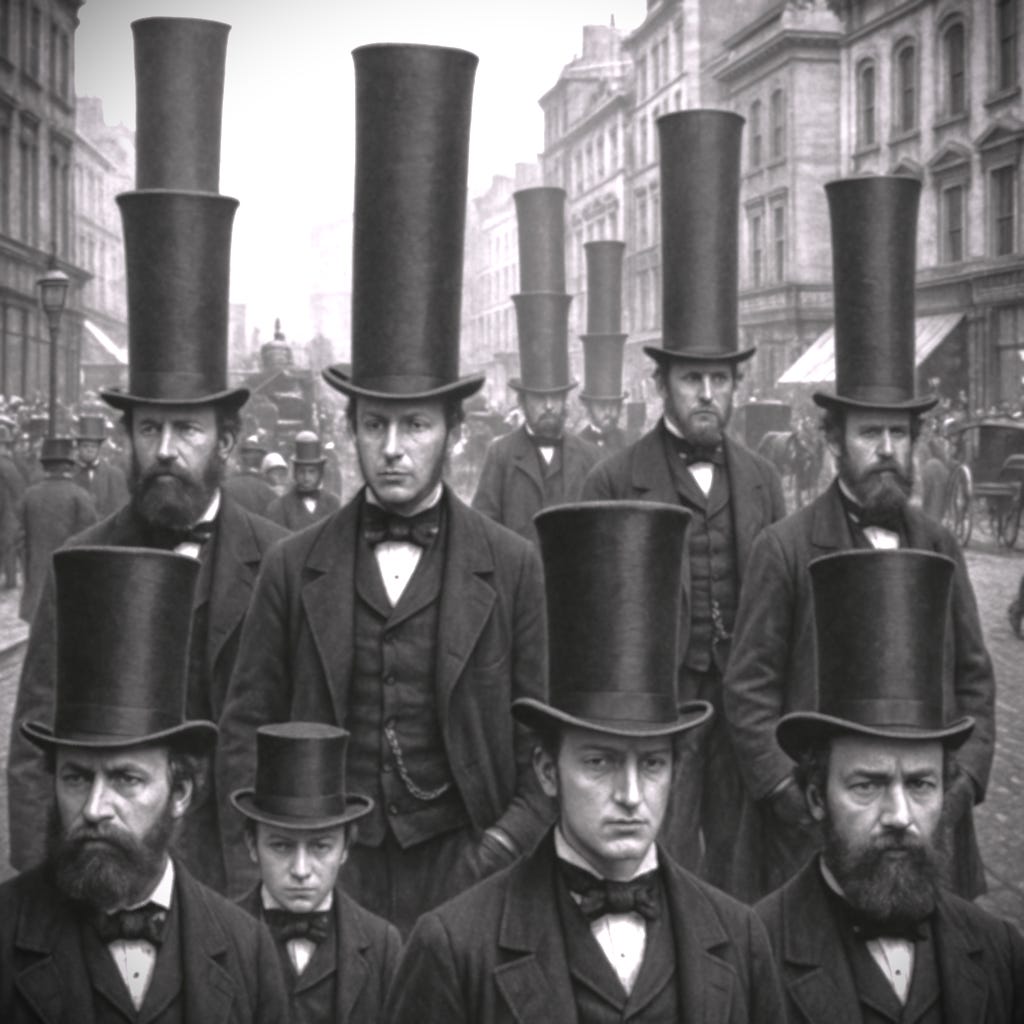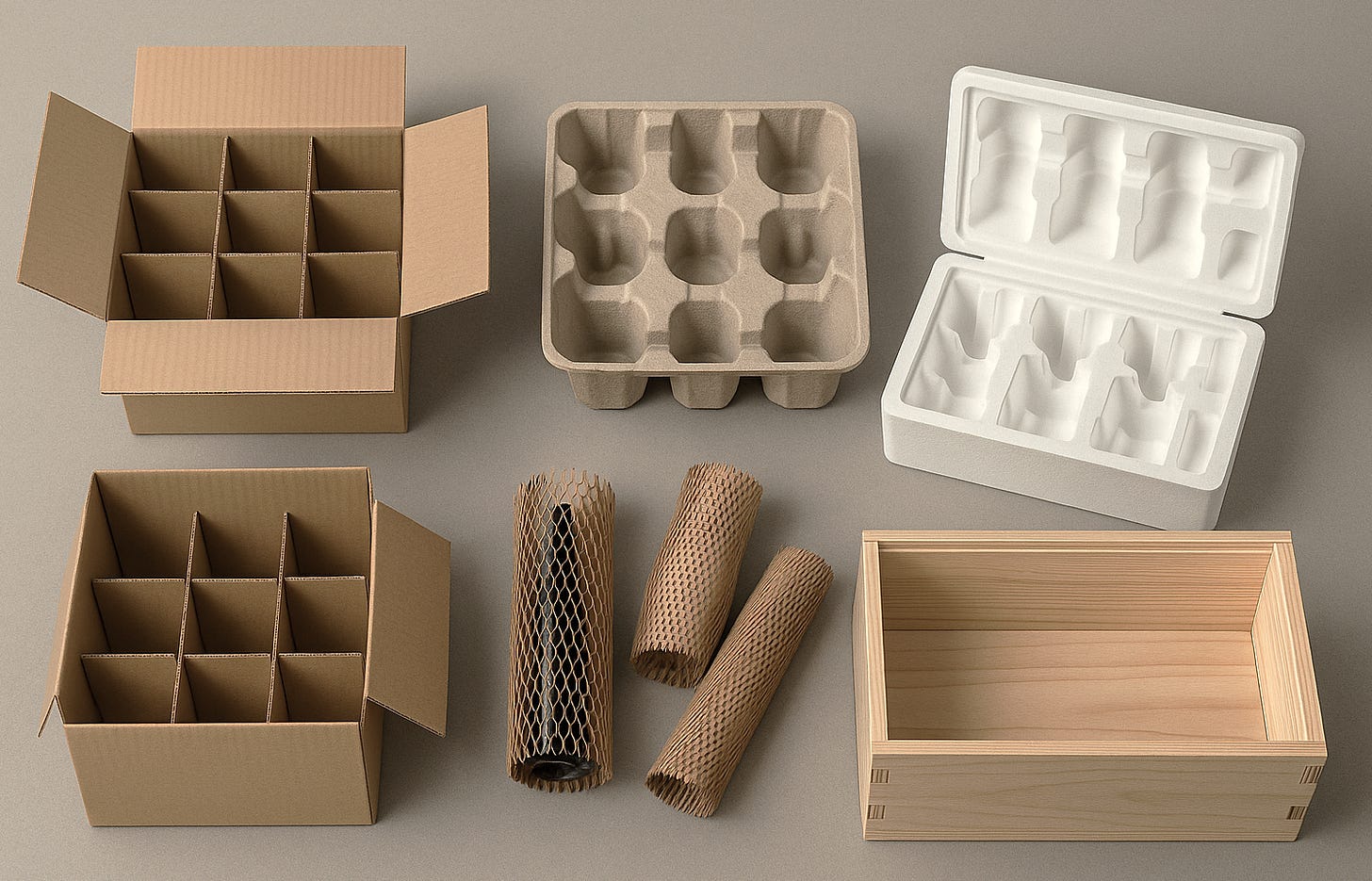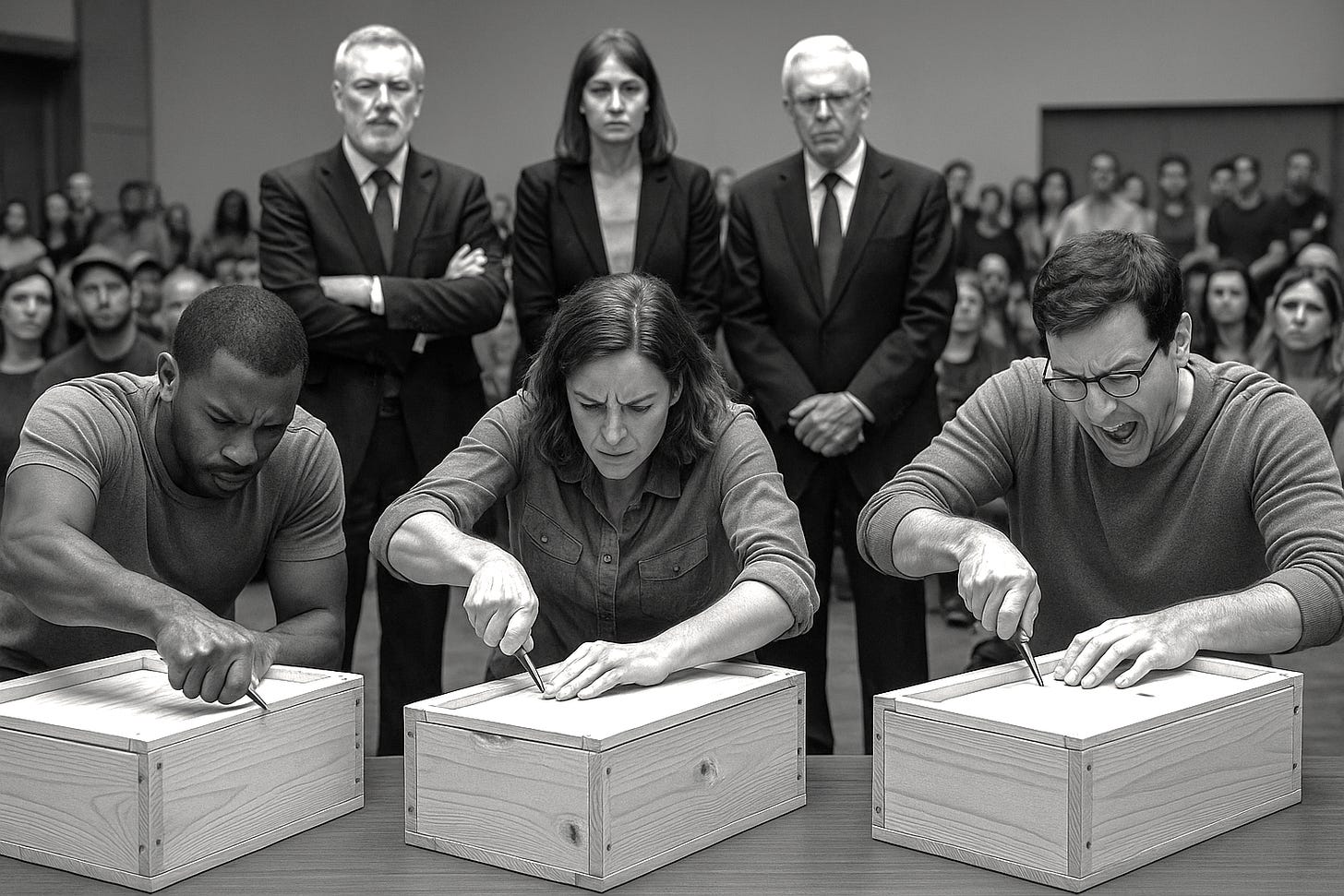The Wine Box Breakdown Challenge
A new competition for working wine professionals...
Introducing the First Annual Speed Wine Box Breakdown Champions Championship
Are you a sommelier? A wine merchant? A cellar hand? A bartender?
Do you have wrists of steel and a thousand paper cuts?
Do you have what it takes? Do you know what it takes?
I don’t, if you could tell me, I would be ever so grateful.
We here, at the Indelible Wine Stain, are so very proud to announce the Speed Wine Box Breakdown Championship…the only professional contest that recognizes the true backbone of the wine industry.
The breaking down of endless mountains of sog-warped, tape-wrapped, and awkwardly glued cardboard boxes at lightning speed.
Why Enter?
Exactly.
Wine service isn’t just about swirling glasses by your ears, memorizing soil types or dropping the latest word from the winery into casual conversation.
The true working professional knows the bitter truth. Like a Steel Beater’s blisters that mark the hand of a daily work-beast that lives to grind.
We all know that wine competitions celebrate blind tasting, food pairing or obscure trivia about vineyards. But for the first time, the wine world is confronting its greatest hidden skill:
breaking down shipping boxes for recycling.
However, before we venture into this amazing competition - what is cardboard?
Where is it from?
Was it invented? Or is it grown on the cardboard tree?
and by whom and for what purpose?
The Cardboard Story
Just as Pinot Noir shall express nuance across soils, so too does packaging-design whisper secrets of logistics, engineering and cost constraints.
All you need do is listen to the package…
In 1817, in Olde England (or Ang-Land as it should be pronounced, after all it is the land of the Anglo-Saxons and definitely not a Gland) could be found the firm of M. Treverton & Son. They created the first Paper Board box - now known as the ancestor of the modern folding carton. These were not corrugated however, as the world would have to wait a little longer for that.
In the 1840s in France, Silk Producers in Valréas took to using perforated paperboard boxes to transport “Bombyx mori eggs,” and for more than a century the manufacture of cardboard boxes was a major industry there. It was known by some as France’s “Cardboard Capital.”
Tall Hats
In 1856, in England again, Healy & Allen patented corrugated paper as a liner for tall hats but not for shipping… after all the taller the hat, the finer the man.
By 1871, this caught on and Albert L. Jones, from New York, New York patented single-face corrugated paper wrapping for fragile items, such as bottles, small lamps, a decorative Christmas Imp or a Giant’s thimble.
This was the first step towards what we know as the cardboard box.
Brooklyn printer, Robert Gair in a mind-melting move, discovered he could cut and crease paperboard in one press pass, enabling pre-cut folding cartons. This was a breakthrough for mass-made boxes and later for branded retail packaging!
Then, in 1895, Henry Norris and Robert Thompson produced the first corrugated boxes. They were sold to Wells Fargo for shipping as they were lighter and cheaper than wood, though early couriers distrusted them.
By the early 20th century, corrugated shipping cartons began displacing wooden crates. Corrugated cases enabled produce to travel long distances with less bruising, opening new retail and export channels.
The advent of lightweight flaked cereals increased the use of cardboard boxes. The first to use cardboard boxes as cereal cartons was the Kellogg Company.
What are the different types?
When you order wine, it doesn’t just teleport to your door…yet.
These days, it travels in carefully engineered packaging.
Here’s a peek at the unsung heroes that protect your bottles along the way and of course, these are the challenges facing our contestants!
The Classics
The 12-Bottle Case (RSC/FEFCO 0201)
The Workhorse. The Donkey.
Four flaps meet in the middle, usually with pulp or foam trays inside.
Cheap, efficient and everywhere.
The Downsides? Inserts that stick like cling film and the occasional papercut.
6-Bottle Reinforced Case (A.K.A the Double-Wall)
The Premium Napa of shipping boxes.
Sturdy, thick and tape-heavy - like a 1980s radio DJ.
Built for smaller shipments that still need muscle.
More expensive and heavier, but far less likely to crumple.
The Inserts
Molded Pulp
Recycled paper molded into snug bottle cradles.
Eco-friendly, nestable and widely recyclable. Doesn’t love rain or humidity.
EPS Foam
Foam coffins for bottles.
Excellent protection and insulation.
Shipping carriers love them but terrible for storage space and landfill optics.
Die-Cut Corrugated Pop-Ups
All-cardboard dividers that fold into place.
Ship flat, recycle easily, look neat.
Less cushioning but quick to assemble.
Honeycomb Sleeves (A.K.A. Flexi-Hex)
Each bottle gets a paper honeycomb jacket inside a carton.
Plastic-free and gift-ready but don’t expect a lot of insulation.
Inflatable Air Sleeves
Individual bubble cocoons you pump full of air.
Space-saving and protective until one leaks.
Wooden Crates
Reserved for collectable bottles.
Heavy, expensive, splinter-prone but undeniably classy.
Now that you are a Cardboard Connoisseur, let’s go back to the Speed Wine Box Breakdown Champions Championship!
What is the Format?
We are happy to release this information for those daring entrants that wish to design a 3-month training montage…
Well, Ladies and Gentlemens, watch in awe as Contestants face a grueling gauntlet of real-world, mind-boggling, Box-Breakdown scenarios.
Round 1: The Burgundy Gauntlet
Twelve-staple boxes designed by medieval sadists.
Points deducted for bleeding on the floor.
Round 2: The Case Purchase Direct from Winery Tape-Off
Five rolls of industrial-strength tape entwine around the cardboard like an Anaconda to a neck. Judges award flair points for use of knee leverage.
Round 3: The Six-bottle Styro-Shipper!
Can you break them down without your mind wandering to the landfills?
Round 4: The Grand Finale
A forklift drops a tower of mixed imports crates.
It’s a chaotic mess of multi-box madness as our champion rises to the top!
The Prizes
The champion will receive the utmost respect from wine workers worldwide and a Golden Box Cutter Trophy!
and also…
a lifetime supply of sticky band-aids.
The Fine Print
Safety goggles mandatory. Disqualifications for illegal moves such as the “Inverness Stomp” and the “Lodi Bottom Bomb.” Competitors found sneaking in a Twin or a lookalike to attempt the “Old Switcheroo” will face immediate banishment from the wine industry in general.
If you would like to enter the contest or if you know somebody that might well be the fastest wine box break-downer that you have seen, don’t hesitate to contact us for an application form.







